But that's OK, because there was a lot more going on at Project Row Houses. There were seven student artists who had studio space from July 6 to August 14, then would display their work in some of the row houses from August 15 through September 13. (So you still have about a week to catch this show.) Each artist gets one row house in which to put up his or her installation. They were all pretty interesting--I liked three of them in particular.
Robert McShan (who goes to TSU) showed a combination of paintings and installations. One installation he had was in a closet, and you could only see it by looking through a hole in the door. Obviously one thinks of Étant donnés by Marcel Duchamp, and I personally remembered a show cureated by Larry Reid at the OK Hotel in Seattle, where each piece was in a room in this old hotel and likewise viewable only through a small peephole in the door.
This is what it looks like from the outside:
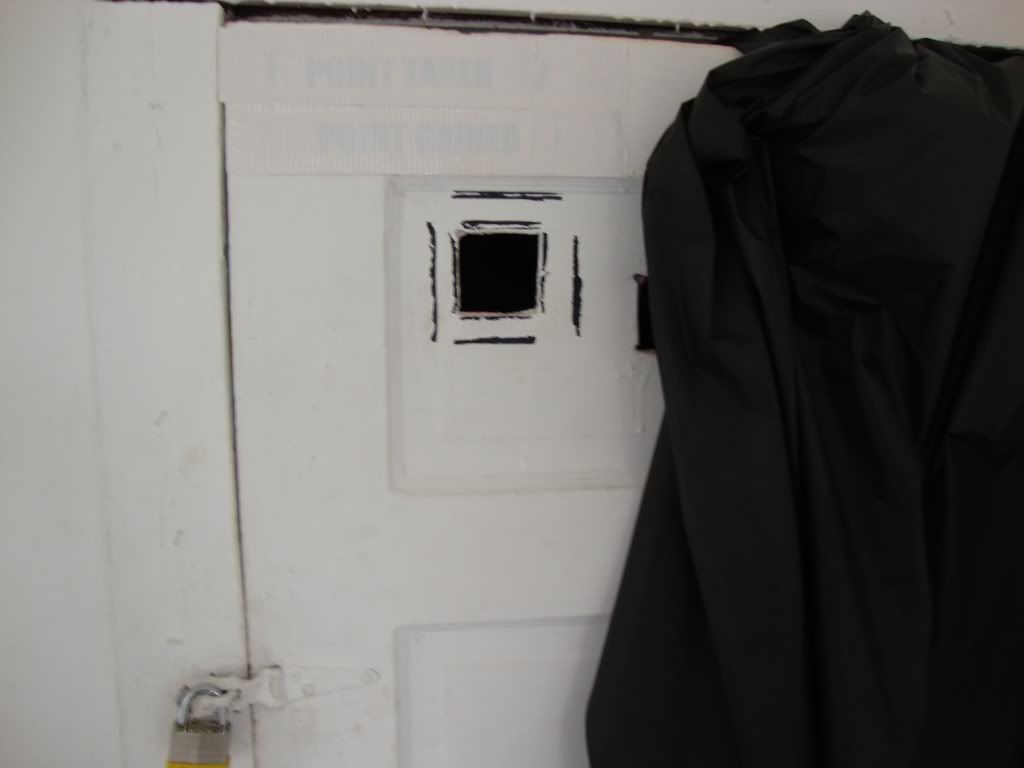
Robert McShan, Point Taken, Point Given, installation, 2009
And inside:
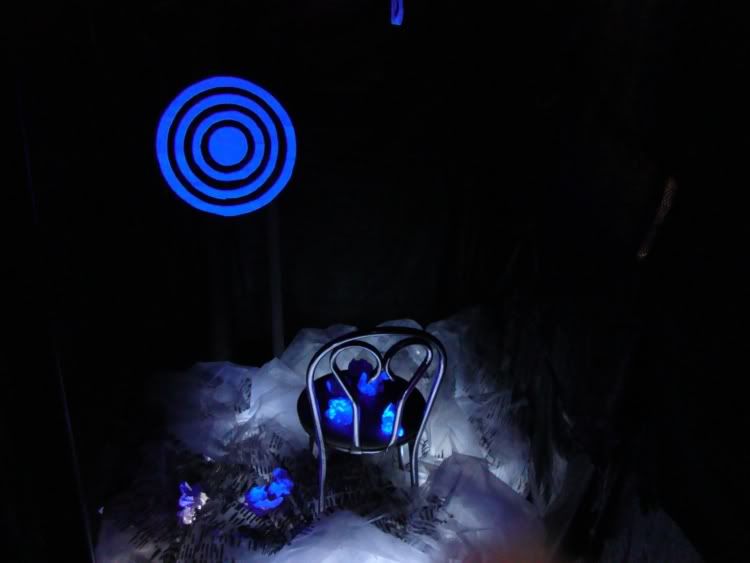
Robert McShan, Point Taken, Point Given, installation, 2009
Pretty spooky, huh? But actually, it needs to be experienced in time to get the full effect.
Robert McShan, Point Taken, Point Given, installation, 2009
And here's what it looks like when I took a flash photo:
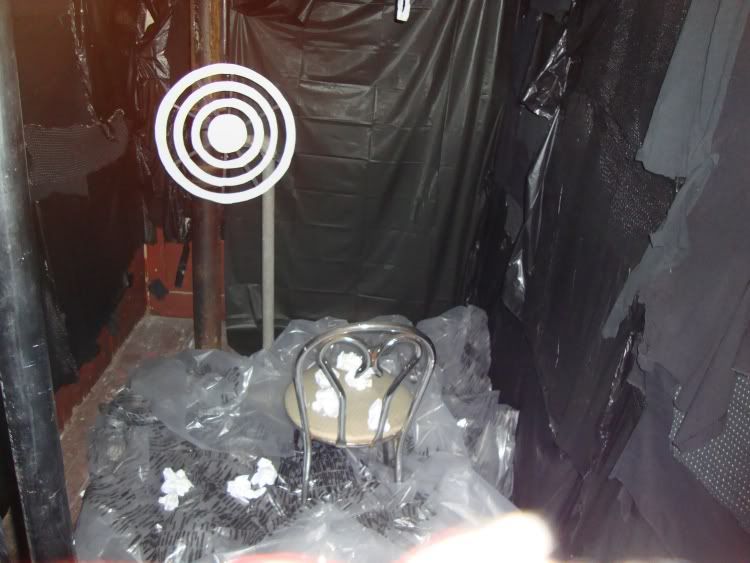
Robert McShan, Point Taken, Point Given, installation, 2009
Jonatan Lopez comes over from Houston Community College. He has a brutal installation called "Vessel States" which is all about bodies--tortured, in bondage, enslaved, eviscerated. This kind of subject matter seems like the kind that might be appealing to a young male artist--sexy, political, hits you like a punch in the face. I look for a little more subtlety in art I like, but the thing here is that Lopez did such a great job. The work just looks stunning.
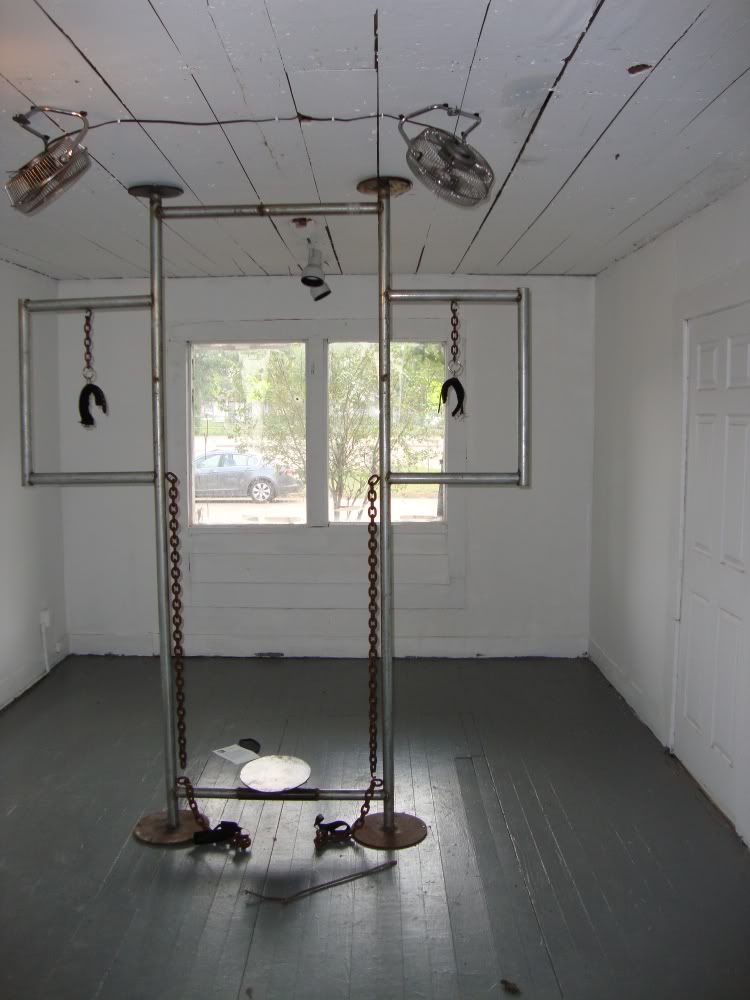
Jonatan Lopez, Vessel States detail, installation, 2009
My first thought--a device for displaying slaves at auction--a provocative piece in an African-American neighborhood. My second thought was that maybe Jonatan has some interesting hobbies... And it gets more violent from there.
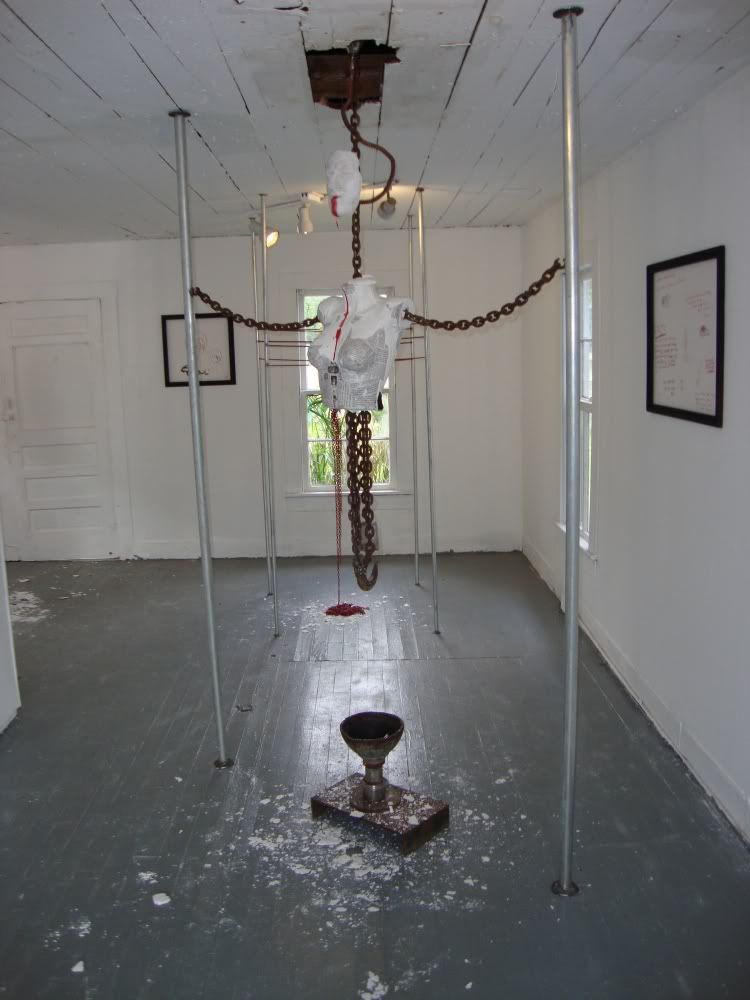
Jonatan Lopez, Vessel States detail, installation, 2009
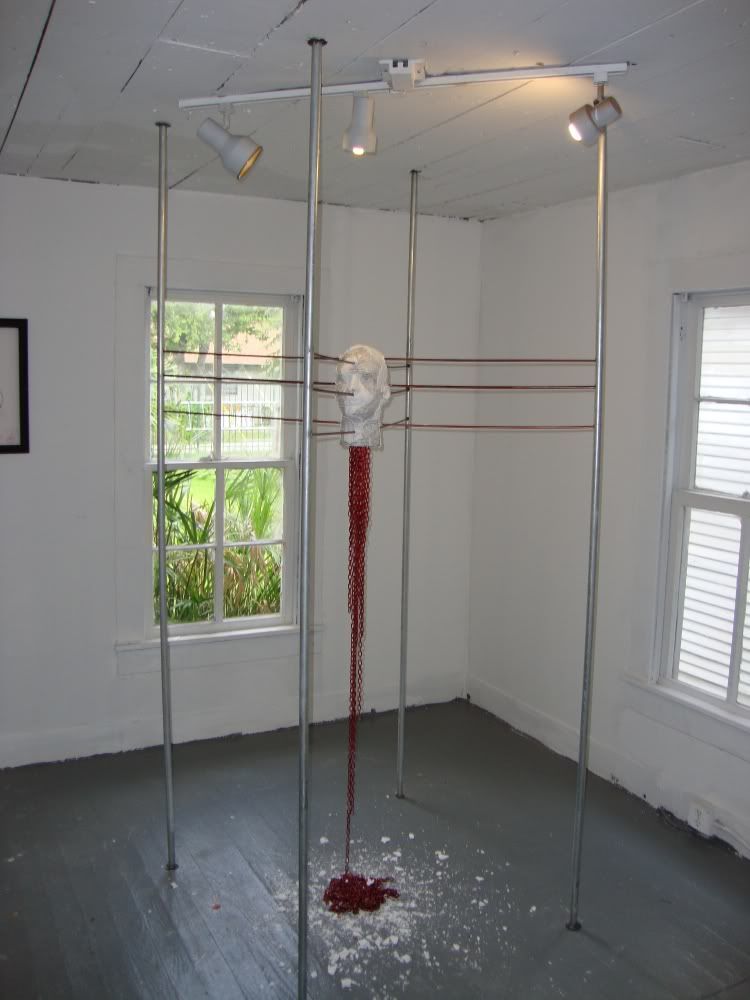
Jonatan Lopez, Vessel States detail, installation, 2009
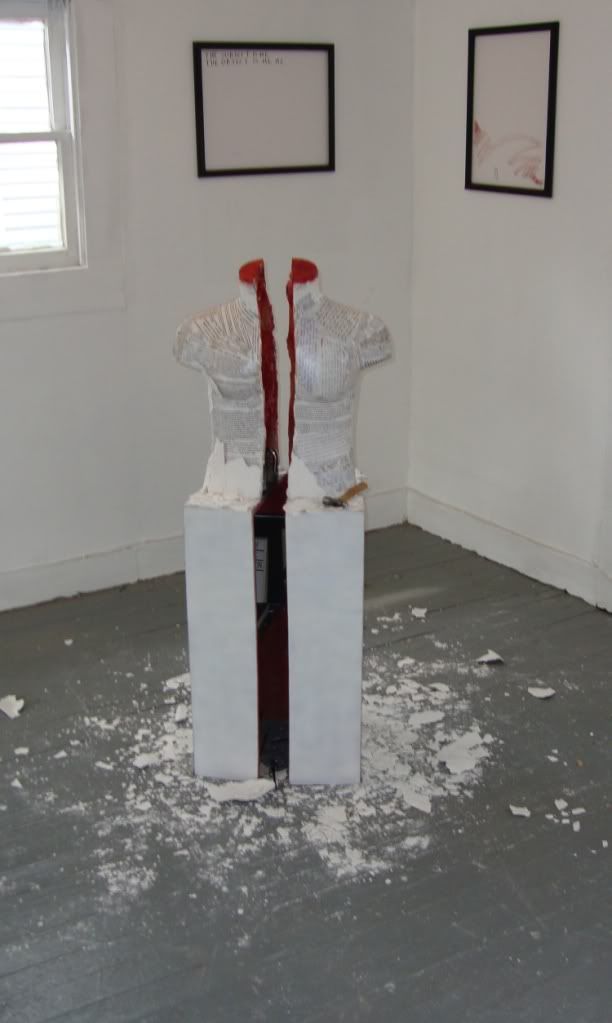
Jonatan Lopez, Vessel States detail, installation, 2009

Jonatan Lopez, Vessel States detail, installation, 2009
I couldn't help but think of prisoners tortured to death in Bagram, hostages beheaded on video by religious fanatics, or 18 people massacred by narcotraficantes in a rehab center but also of modern horror movies like Saw. "Vessel States" is powerful.
My favorite piece is "Two Point Four Million" by Jorge Galvan from U.H. The installation consists of the words "THIS LAND WAS MADE" constructed our of blocky three-dimensional letters, each one made from a different material that one might use in building something.
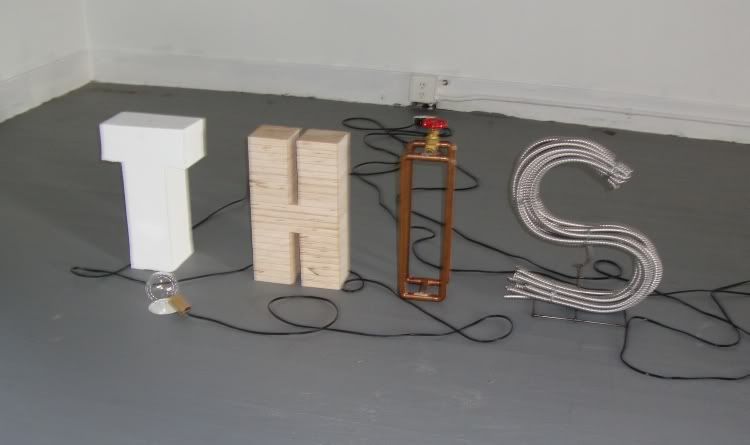
Jorge Galvan, Two Point Four Million detail, installation, 2009
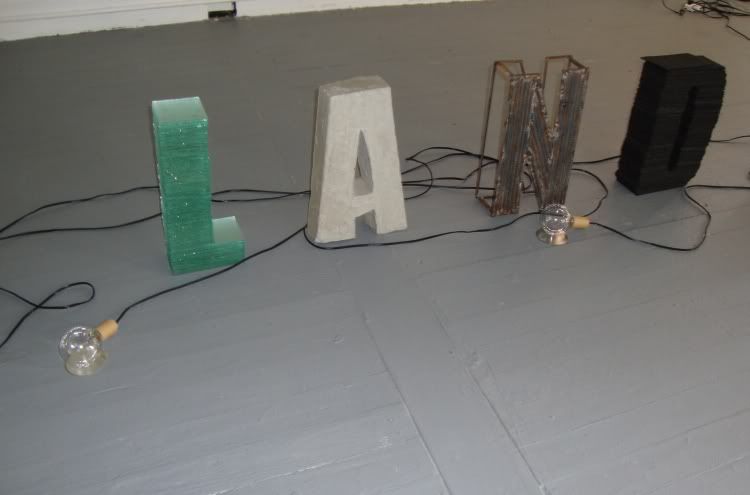
Jorge Galvan, Two Point Four Million detail, installation, 2009
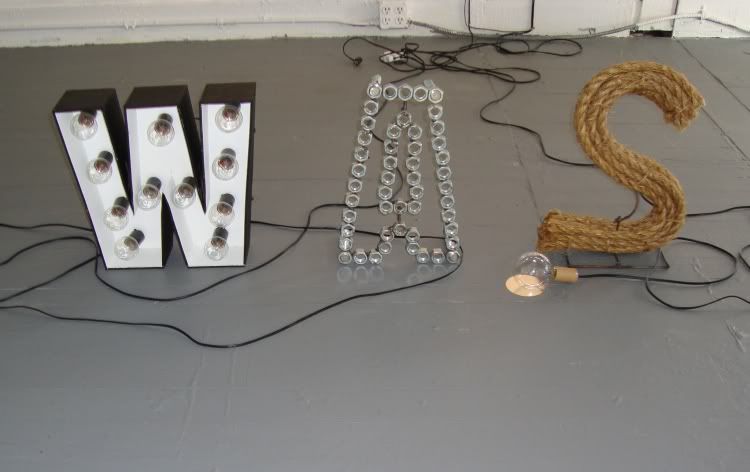
Jorge Galvan, Two Point Four Million detail, installation, 2009
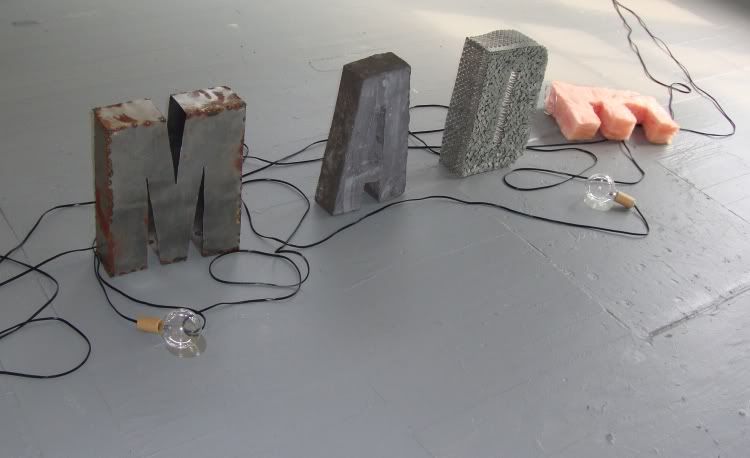
Jorge Galvan, Two Point Four Million detail, installation, 2009
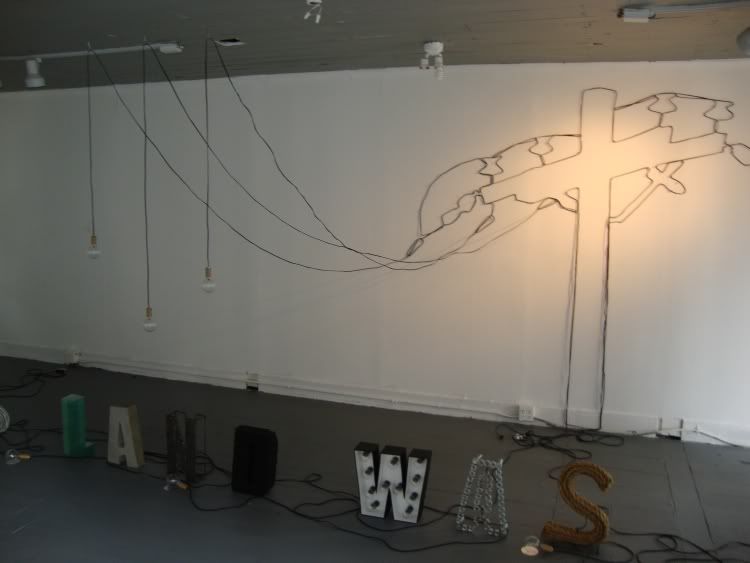
Jorge Galvan, Two Point Four Million detail, installation, 2009
The piece uses the tiny row house well. It has a unity, but it can't really be photographed all in one piece. You have to walk around it to see it. The directness of the written message and the materials and even the type-style makes it feel quintessentially American. It has the same kind of "all-American" type/message quality that Wayne White's work does. (Wayne White is on my mind because he has a show opening soon at the Rice Gallery.)
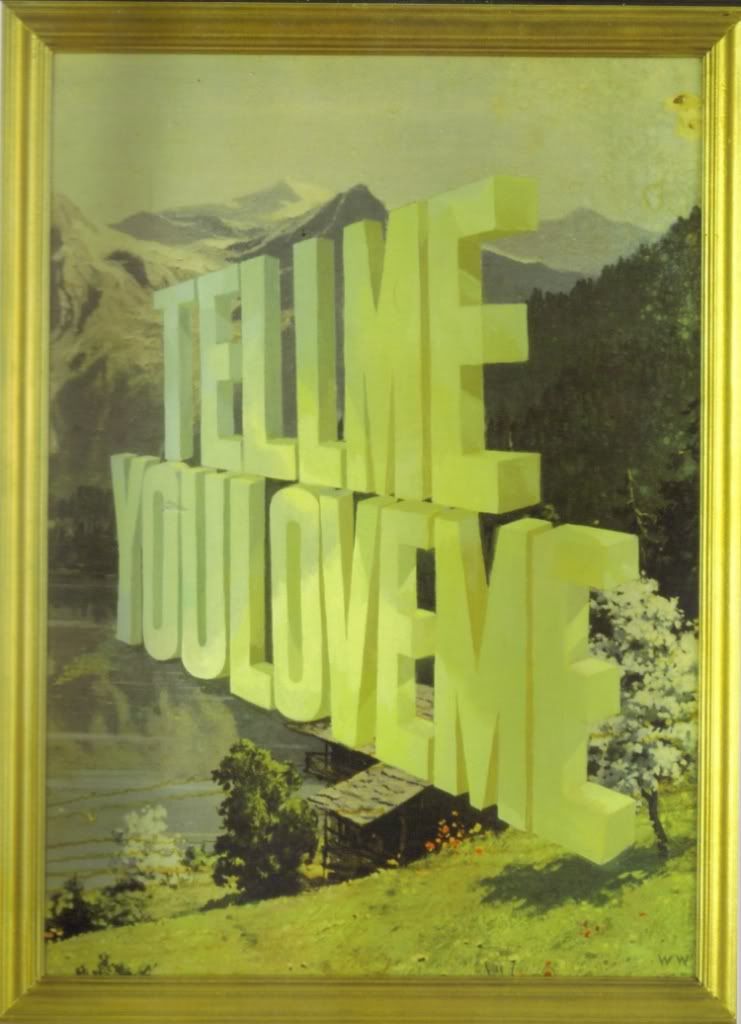
Wayne White, Tell Me You Love Me, acrylic painted on a found lithograph, 2008
I love the way each letter is quite separately made from a completely different medium than the others, but still retains a unity of type style--a type that is geared towards blocky practicality and instant communication.
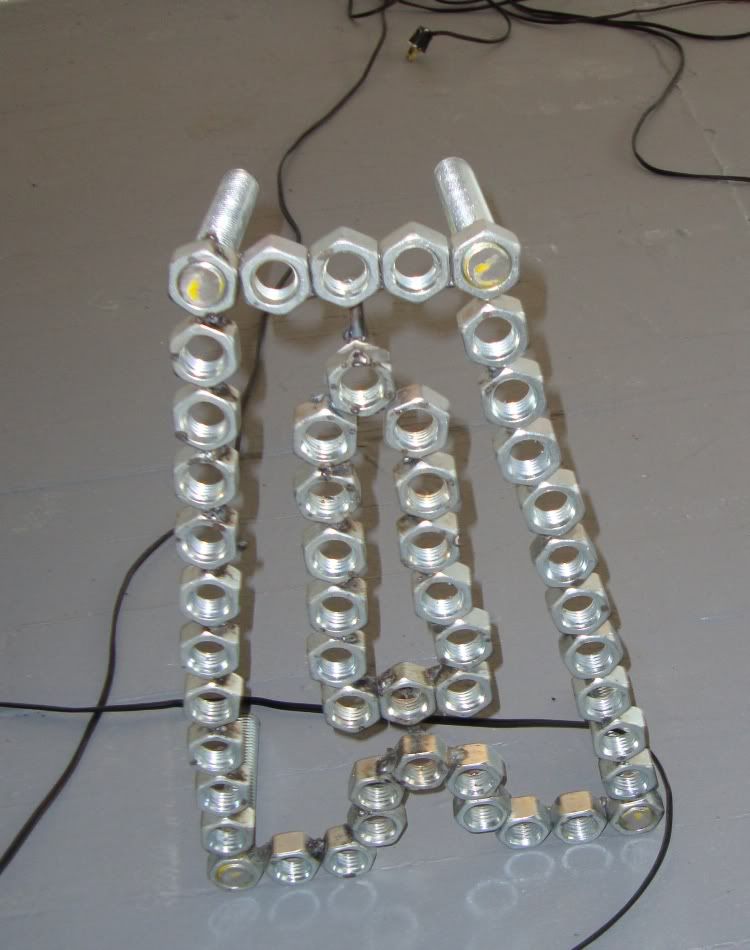
Jorge Galvan, Two Point Four Million detail, installation, 2009
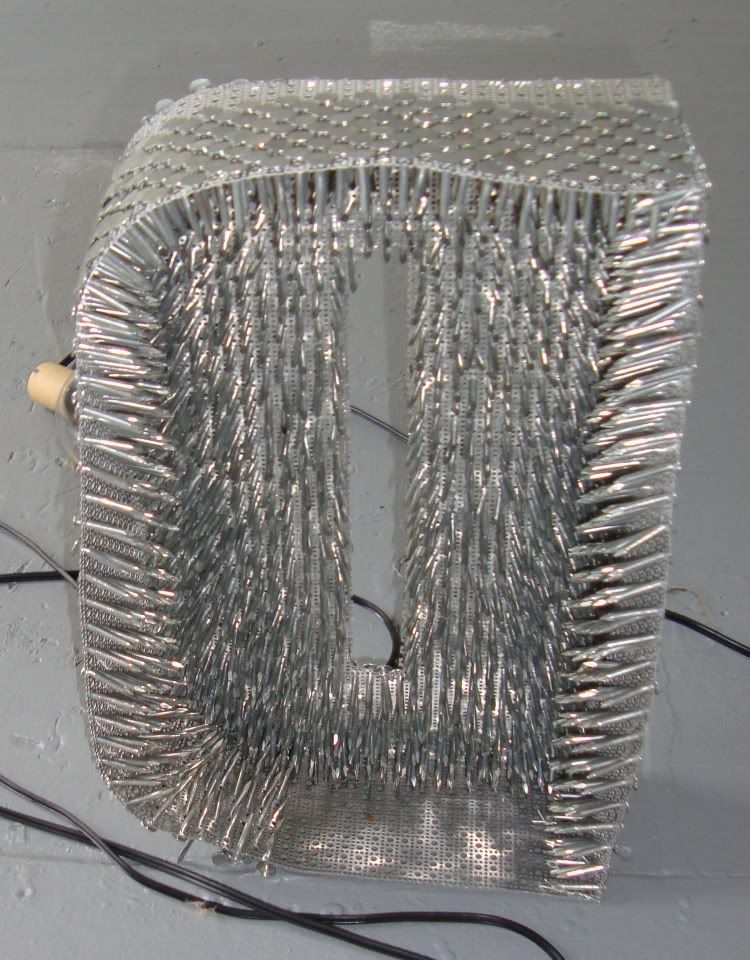
Jorge Galvan, Two Point Four Million detail, installation, 2009
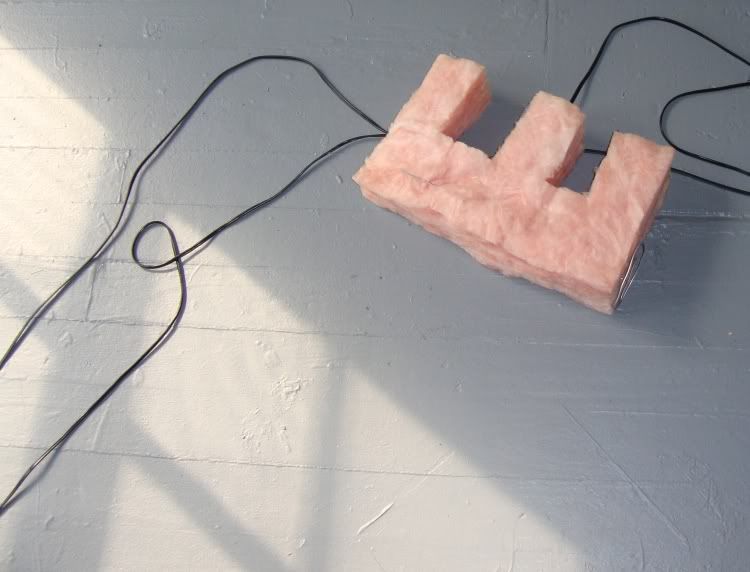
Jorge Galvan, Two Point Four Million detail, installation, 2009
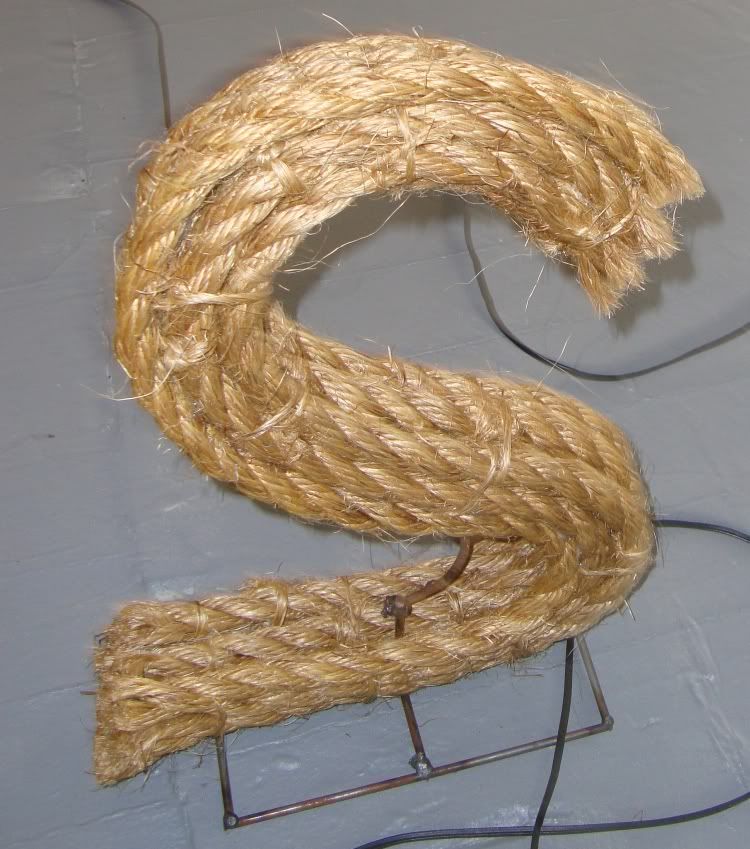
Jorge Galvan, Two Point Four Million detail, installation, 2009
Galvan has a particular meaning in mind for this piece.
This work reflects American history, immigration, manual labor, and in particular, construction. I explore the materials and their capabilities [have I ever mentioned that I hate the word "explore" in artists' statements?--RB] while focusing the work on laborers, their history and legal status in the United States. [...] Immigrants are a large part of the construction and development of America [...] Construction has always been a home for new immigrants.Well, yes and no. Immigrants (including slaves) built a large chunk of America. But lot of America was constructed by native-born descendents of immigrants. (And let's not forget the many Mohawks who were hired to build skyscrapers in NYC because of their apparent fearlessness and lack of vertigo).
So I am personally interpreting it as a tribute to our man-made environment and anyone who works or worked building it. Tributes to labor as a subject in art generally went out of style in the 30s (in the West, at least). I'm glad Galvan has fashioned this tribute to the construction workers. I think it would be a great piece for a local union hall.
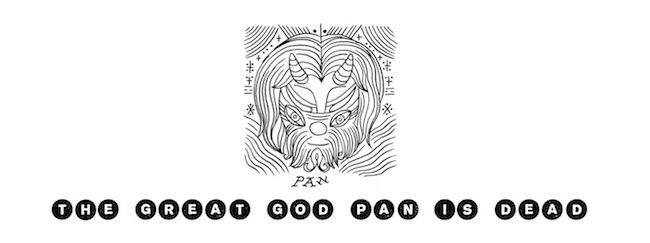



No comments:
Post a Comment